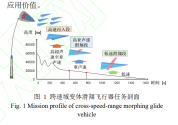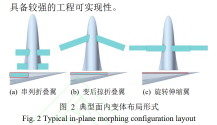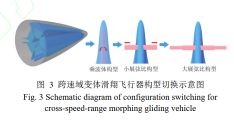You are using an out of date browser. It may not display this or other websites correctly.
You should upgrade or use an alternative browser.
You should upgrade or use an alternative browser.
China ICBM/SLBM, nuclear arms thread
- Thread starter Blitzo
- Start date
That's one honker of a missile and it tracks with that Twitter post from ben_reuter about the silo size. Of course some of that space is taken up by the cannister body, but you can still easily fit a Sino-Peacekeeper in there. I wonder if the 10 axle TEL truck is a road-mobile version of this missile and if it's in service or just experimental.
Most recent research on MIRV'ed ICBM HGV. Estimated range at 10,500km with up to 5 RVs weighted ranged 80-200kg. Each RV comes with expandable wings.
View attachment 158808
View attachment 158809
View attachment 158810
Wouldn't be surprised when China fields ICBMs that are tipped with HGV-design warheads instead of the present mono-conical-design warheads in the coming years. Sure, less warheads per ICBM (meaning more ICBMs needed for the same number of warheads, and/or larger ICBMs needed) - But the significant capability upgrade of penetrating the enemy's integrated ABM systems would be very evident and justified against the additional costs incurred.
On the other hand - Why are the diagrams showing the gliding vehicles decelerate from hypersonic speeds to high-subsonic/transsonic speeds? Wouldn't that make the vehicles much easier to be intercepted?
Last edited:
It shows a total of only 1600 seconds (some 22ish minutes).Wouldn't be surprised when China fields ICBMs that are tipped with HGV-design warheads instead of the present mono-conical-design warheads in the coming years. Sure, less warheads per ICBM (meaning more ICBMs needed for the same number of warheads, and/or larger ICBMs needed) - But the significant capability upgrade of penetrating the enemy's integrated ABM systems would be very evident and justified against the additional costs incurred.
On the other hand - Why are the diagrams showing the gliding vehicles decelerate from hypersonic speeds to high-subsonic/transsonic speeds? Wouldn't that make the vehicles much easier to be intercepted?
At 10500 km, that would be avg speed of 22 mach an hour.
Even at its low speed at end, likely still far above mach 5 with a very low flight path.
Edit: Wait, on the graph it actually says subsonic huh.
Wouldn't be surprised when China fields ICBMs that are tipped with HGV-design warheads instead of the present mono-conical-design warheads in the coming years. Sure, less warheads per ICBM (meaning more ICBMs needed for the same number of warheads, and/or larger ICBMs needed) - But the significant capability upgrade of penetrating the enemy's integrated ABM systems would be very evident and justified against the additional costs incurred.
On the other hand - Why are the diagrams showing the gliding vehicles decelerate from hypersonic speeds to high-subsonic/transsonic speeds? Wouldn't that make the vehicles much easier to be intercepted?
These attacks typically involve near-vertical high-angle dives.
Intercepting maneuvering missiles presents a daunting challenge primarily due to unpredictable trajectories. Interceptors approaching head-on must sustain extreme G-forces to catch the target (unlike tail-chase scenarios where considerably lower G-loads suffice).
-----------------------------
Sorry, I just realized I responded incorrectly. The diagram refers to subsonic glide. My previous answer addressed warhead reentry vehicles operating at non-subsonic speeds.
Last edited:
If China sticks to its no first use policy, I don't think it makes sense to have any silo based ICBM. Cause they will be identified and destroyed in the first strike.DF-5C is said to be a massive upgrade over the DF-5B which increases both range and payload but most importantly could achieve similar reaction time or potentially even faster than solid fueled ICBMs in second strike situation.
Having road mobile icbm and submarines based ones is the way to go.
If China is going for so many silos then they probably have already changed their policy to allow first use.
You've heard of LOW - launch on warning, right?If China sticks to its no first use policy, I don't think it makes sense to have any silo based ICBM. Cause they will be identified and destroyed in the first strike.
Having road mobile icbm and submarines based ones is the way to go.
If China is going for so many silos then they probably have already changed their policy to allow first use.





